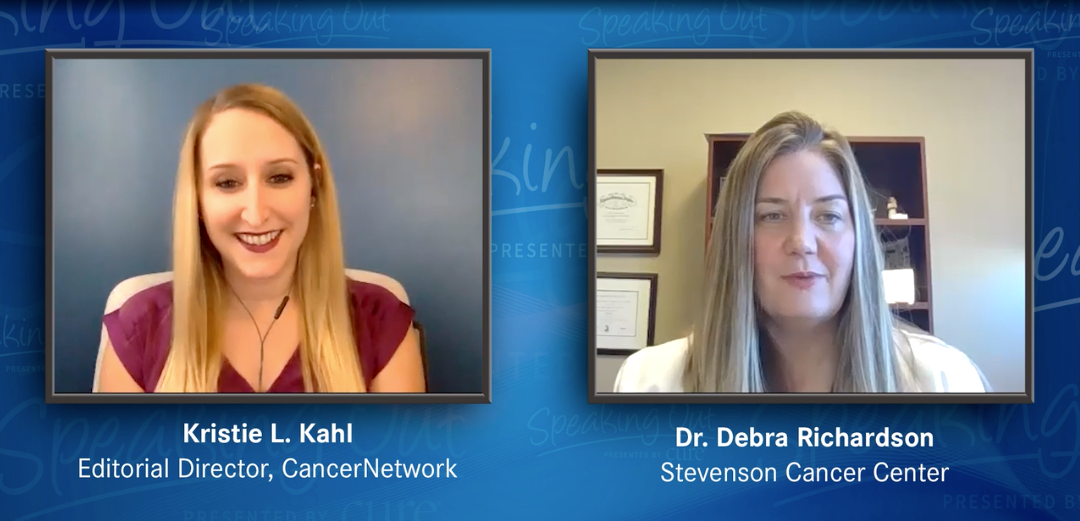Article
Lynparza-Cediranib Combination Produces Similar Activity to Standard of Care Chemotherapy in Ovarian Cancer
Author(s):
The presentation of the complete data from the NRG-GY004 trial comes just months after AstraZeneca and Merck announced in a press release that the combination failed to meet its primary endpoint of progression-free survival.
Final data from a phase 3 trial presented during the 2020 ASCO Virtual Scientific Program suggests that the combination of Lynparza (olaparib) and cediranib produce similar results to standard of care platinum-based chemotherapy treatments in patients with recurrent platinum-sensitive ovarian cancer.
The presentation of the complete data from the NRG-GY004 trial comes just months after AstraZeneca and Merck announced in a press release that the combination failed to meet its primary endpoint of progression-free survival (PFS).
And although the combination failed to meet its primary endpoint, the final data also demonstrated that Lynparza alone and in combination with cediranib, an oral VEGFR inhibitor which blocks the growth of blood vessels supporting tumor growth, produced substantial activity for patients with a germline BRCA (gBRCA) mutation.
“Three clinical studies have suggested the potential for synergy between anti-angiogenics and PARP inhibitors,” lead study author Dr. Joyce F. Liu, director of clinical research in the Division of Gynecologic Oncology at Dana-Farber Cancer Institute, said while presenting the data. “In pre-clinical studies in ovarian cancer cell lines, synergy between cediranib and olaparib has been observed.”
Overall, 565 patients were enrolled in the trial and randomized to one of three groups:
- standard of care chemotherapy (187);
- Lynparza and cediranib combination (189), and
- olaparib alone (189).
The main outcome of the study, which was not met, was progression-free survival. Additional secondary endpoints included overall survival (OS), overall response rate, safety and quality of life.
“NRG-GY004 is the first phase 3 trial to compare an all oral non-platinum regimen to platinum-based chemotherapy in platinum-sensitive ovarian cancer,” said Liu.
Patients who received the standard of care chemotherapy achieved a median PFS of 10.3 months compared to 10.4 months in patients who received the combination. The arm that received Lynparza alone achieved a median PFS of 8.2 months.
The data also showed that the median OS for patients who received the combination was 30.5 months compared to 31.3 months in those who received the standard of care chemotherapy. Patients in the Lynparza monotherapy arm had a slightly shorter median OS of 29.2 months. Additionally, patients who received the standard of care treatment had the highest overall response rate (71.3%), followed by the combination (69.4%) and Lynparza alone (52.4%).
Patients who presented with a gBRCA mutation and received the combination achieved a PFS of 18 months, and those who received Lynparza alone achieved a PFS of 12.7 months.
Patients who received the standard of care chemotherapy were more likely to experience blood-related side effects, whereas patients treated with the combination were more likely to experience non-blood-related side effects.
Although the research failed to address “whether a non-platinum therapy could improve clinical outcomes in platinum-sensitive ovarian cancer,” the investigators recommend continued evaluation of this therapy to treat platinum-sensitive ovarian cancer.
“Overall, although NRG-GY004 did not meet its primary endpoint, non-platinum therapies may still offer alternatives in women with recurrent platinum-sensitive ovarian cancer, and GY004 demonstrated that these can be feasibly explored in future studies in this setting,” Liu concluded.
A version of this story originally appeared on OncLive® as “Cediranib/Olaparib Combo Yields Comparable Results to Chemo in Ovarian Cancer Treatment”.

















